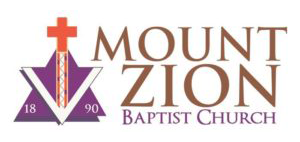On October 18, 2017, the Seattle Landmarks Preservation Board voted UNANIMOUSLY to approve the designation of Mount Zion Baptist Church a Seattle Landmark. The designation is based upon satisfaction of six Designation Standards (SMC 25.12.350). Mount Zion Baptist Church joins only three other Seattle Landmarks that have met all six standards: the Space Needle, the Science Center, and Key Arena.
The features and characteristics of the property identified for preservation include: the site; the exteriors of the church building, educational unit, the Gideon Bell Tower, the interior of the sanctuary, the James Washington, Jr. sculpture “Oracle of Truth” and exempts all elements of the building and site that are liturgical in nature.
Mount Zion Baptist Church was organized in 1890, thirty-eight years after the establishment of Seattle as a city, ten years before the beginning of the 20th Century, and a year after Washington territory became one of the United States. We thank God for the small group of African American Christians, who migrated to Seattle from the south in search of better opportunities and a better life for their families. It is on their legacy of faith we must continue to build. Reverend Dr. W. D. Carter, the pastor of Mount Zion Baptist Church (1912 – 1925) and the congregation purchased the land and hired African American architects Harry and E. R. James to build the first church at the 19th Avenue location. Pastor Carter was a compassionate man who became active in the social and civic affairs of Seattle speaking out on behalf of the young people. The Boys and Young Men’s Community Club of Mount Zion Baptist Church was under his direct management. The youth benefited both socially and spiritually.
Mrs. Corrine Carter was equally as busy with African American girls and young women. She was a trained Y.W.C.A. Executive. She used her gifts and talents to organize the first Negro Branch of the Y.W.C.A. in Seattle. It was named the Phillis Wheatley Branch.
Years later, in 1958, the Reverend Dr. Samuel B. McKinney became pastor. Under his leadership, an educational wing was built in 1962 and the current church in 1975. The church has a unique Afrocentric structure that expresses the history of African and African- American faiths. African Heritage is seen in the structural design, from within and without the church. Each element of the design and structure of the church was carefully
orchestrated by the Reverend Dr. Samuel B. McKinney in conjunction with the Architectural Firm of Durham, Anderson, and Freed.
